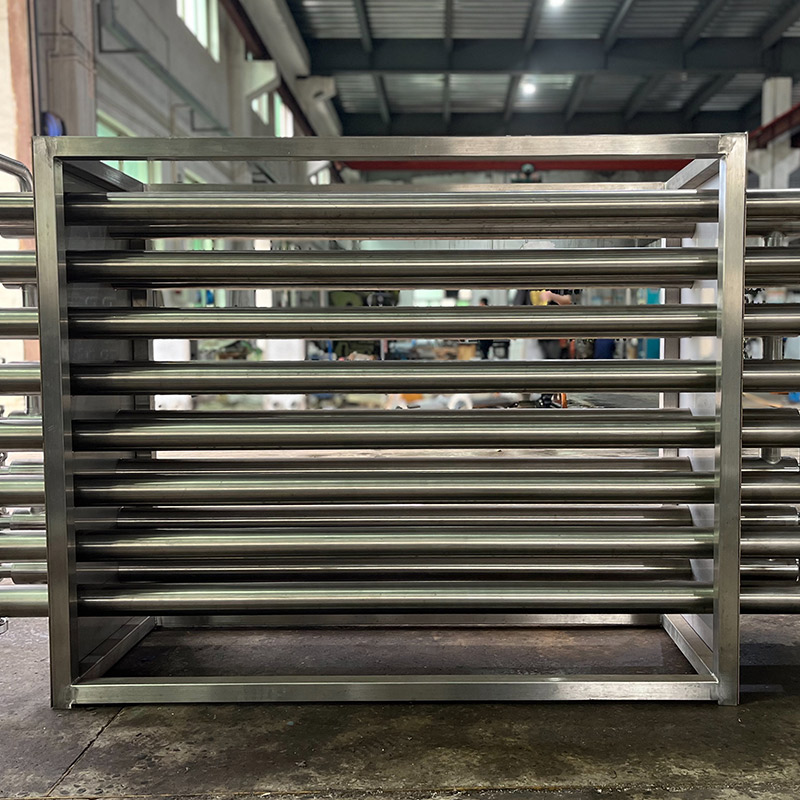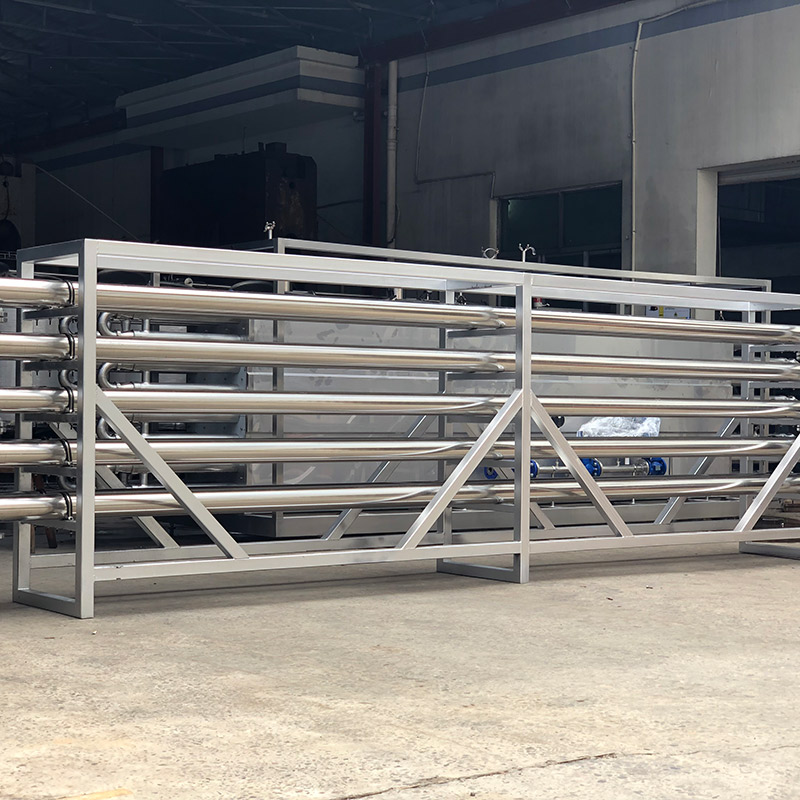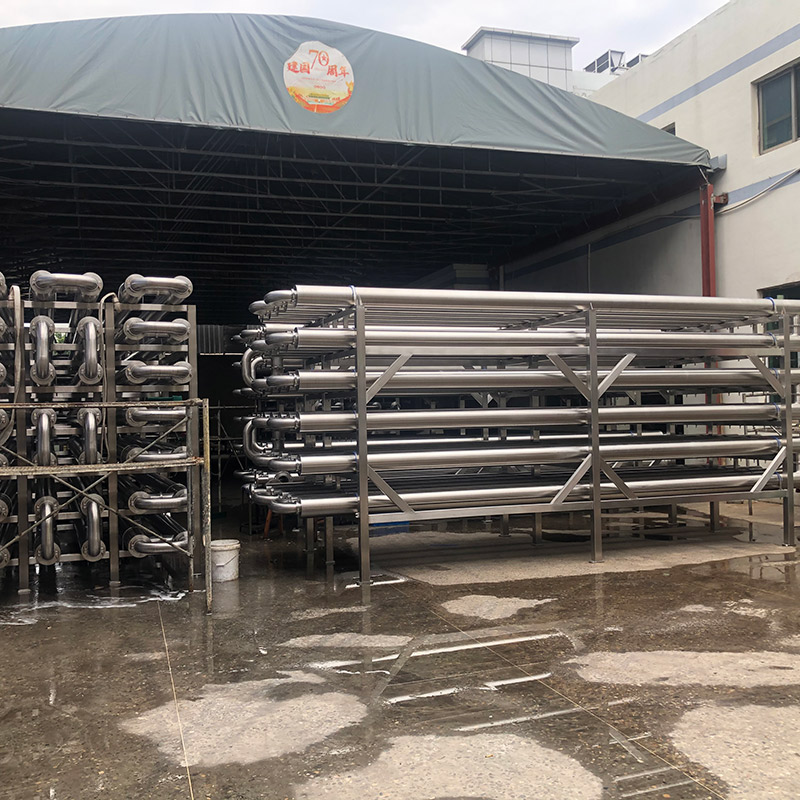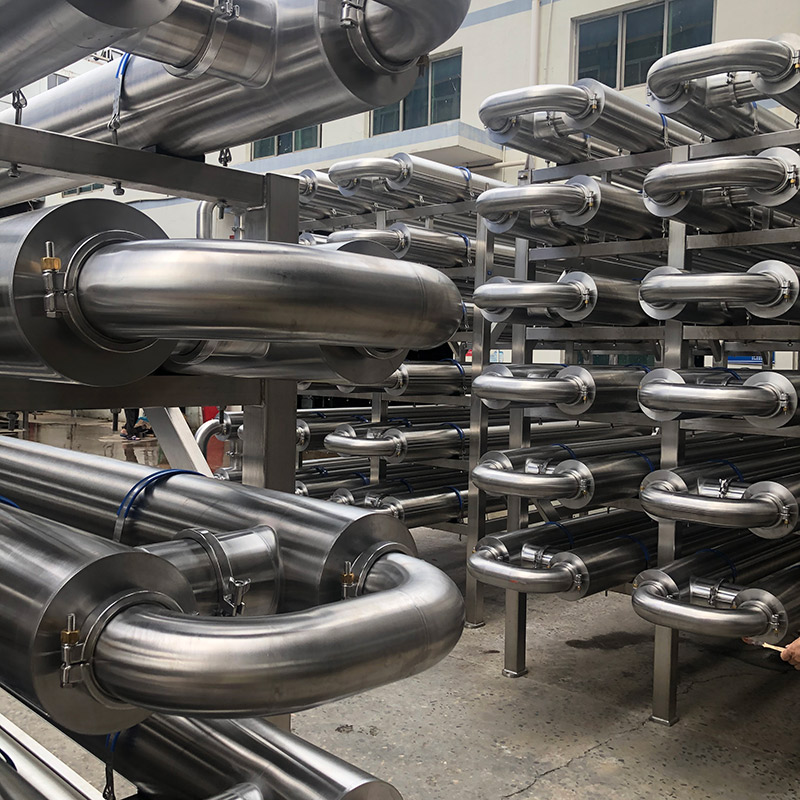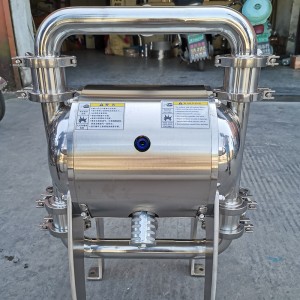
Products
Stainless Steel Shell Casing Tubular Heat Exchanger
Product description
In reverse heat exchange, hot fluid enters from above, cold fluid enters from below, and heat is transferred from one fluid to the other through the inner tube wall. The distance that the hot fluid flows from the inlet end to the outlet end is called the tube side; the fluid enters from the nozzle of the housing, is introduced from one end of the housing to the other end and flows out. Heat exchangers that transfer heat in this way are called shell-side sleeve-and-tube heat exchangers.
Since the casing heat exchanger is widely used in petrochemical, refrigeration and other industrial sectors, the original single heat transfer method and heat transfer efficiency can no longer meet the actual work and production. Many improvements have been made in order to prolong the service life of the double-pipe heat exchanger and increase its efficiency.
As a mainstream heat exchanger, the casing heat exchanger is widely used in refrigeration, petrochemical, chemical, new energy and other industrial fields. Due to the wide application of casing heat exchangers, the improvement of their own heat transfer efficiency can provide a more energy-efficient production method for our industrial production, increase productivity, reduce energy consumption, and play a vital role in the productivity of new energy and other industrial fields. role.
With the promulgation of environmental protection, energy saving and sustainable development policies, the enhancement of people's awareness of environmental protection, the continuous upgrading of new technologies, and the continuous emergence of new materials, the demand for new environmentally friendly and energy-saving casing heat exchangers will become higher and higher. Through the research on the heat transfer process and heat transfer coefficient of the sleeve heat exchanger, new methods and theories are proposed for the actual working environment, safety and reliability, installation, operation and maintenance of the sleeve heat exchanger. Various new materials with better heat transfer performance and lower cost will appear and be widely used in the design and manufacture of sleeve-and-tube heat exchangers. In equipment engineering, energy conservation and environmental protection are always the top priority. The design of double-pipe heat exchangers is no exception. How to test heat transfer with less energy consumption and lower pollution is the top priority for the future development of casing heat exchangers.
